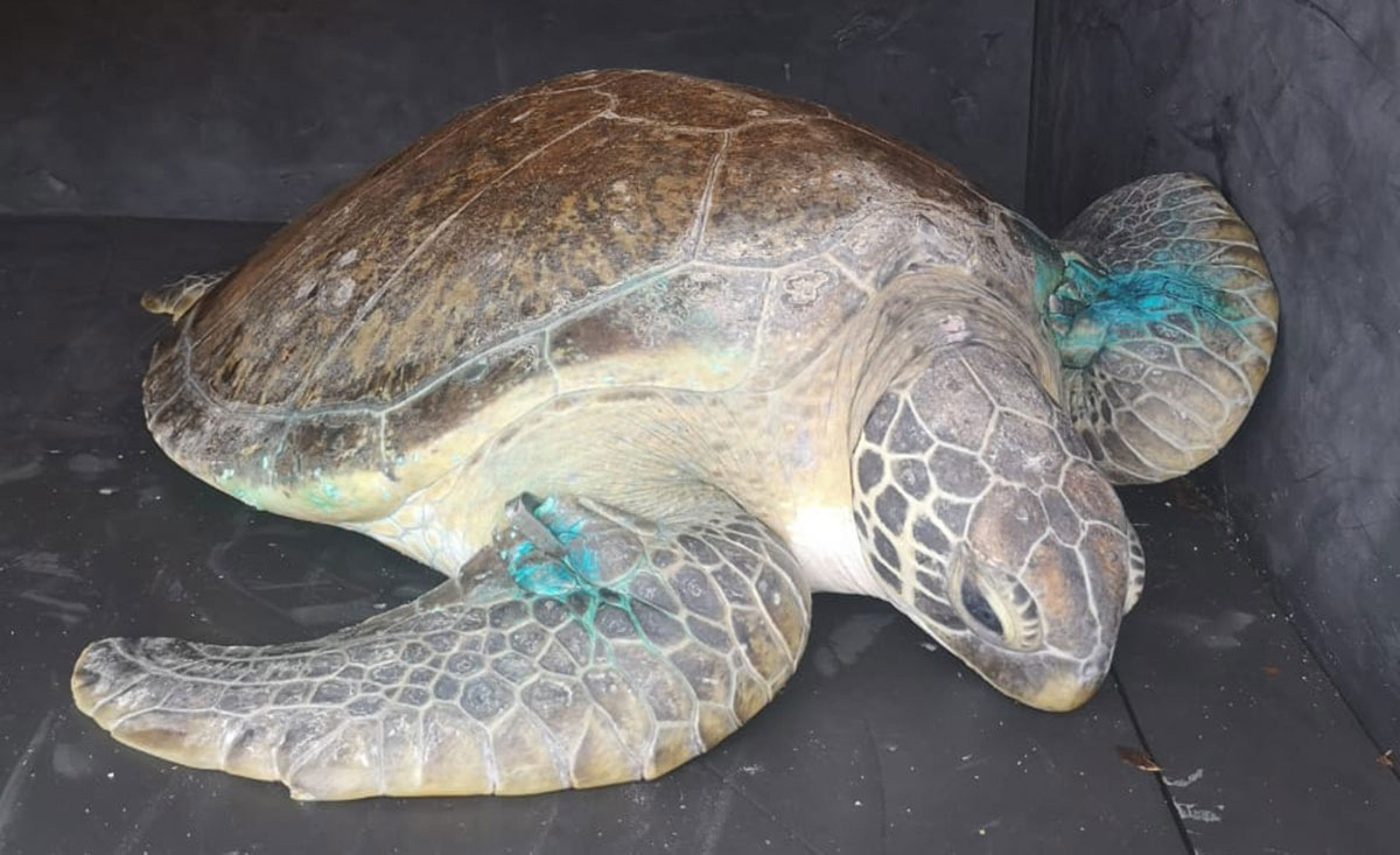
Mission Rocks welcomes green turtle Stella
31 March 2021

The waves of the warm blue waters of the Indian ocean at the Mission Rocks in iSimangaliso Wetland Park sounded like music as they welcomed back to the ocean the sub-adult female green turtle named Stella, who was released this month following a successful rehabilitation by uShaka Sea World from October 2020. Over the rehabilitation period Stella made a good recovery, and was recently declared ready for release. Prior to her release she was fitted with a flipper tag number ZA CC278. Green Turtles are currently listed as endangered on the International Union for Conservation of Nature’s Red List of Threatened Species (IUCN red list). iSimangaliso Wetland Park, which has 221km of coastline, was identified as an ideal release site for rehabilitated green turtles. iSimangaliso is home to various species of turtles, and it is undoubtedly one of the favourite destinations for local and international visitors during the turtle season, from November to March annually. There are only seven species of sea turtles worldwide, and all of them except two (the flatback turtle and Kemp’s Ridley Turtle) visit South Africa. iSimangaliso is one of the jewels of the South African coastlines and was the first South Africa’s World Heritage site to be declared by UNESCO. It boasts hectares of pristine natural ecosystems including swamps, lake systems, beaches, coral reefs, wetlands, woodlands, and coastal forests.
Information about the Green Sea Turtle Common Name: Green sea turtle – named for the green colour of the fat under its shell. (In some areas, the Pacific green turtle is also called the black sea turtle.)
Scientific Name: Chelonia mydas
Size: Adults are 83 – 114 cm in carapace length. The green turtle is the largest of the Cheloniidae family. The largest green turtle ever found was 152 cm in length and 395 kg.
Weight: Adults weigh between 110 – 190 kg.
Diet: Changes significantly during its life. When less than 8 to 10 inches in length eat worms, young crustaceans, aquatic insects, grasses and algae. Once green turtles reach 8 to 10 inches in length, they mostly eat sea grass and algae, the only sea turtle that is strictly herbivorous as an adult. Their jaws are finely serrated which aids them in tearing vegetation.
Habitat: Mainly stay near the coastline and around islands and live in bays and protected shores, especially in areas with seagrass beds. Rarely are they observed in the open ocean.
Nesting: Green turtles nest at intervals of about every 2 years, with wide year-to-year fluctuations in numbers of nesting females. Nests between 3 to 5 times per season. Lays an average of 115 eggs in each nest, with the eggs incubating for about 60 days.
Range: Found in all temperate and tropical waters throughout the world.
Threats to Survival: The greatest threat is from the commercial harvest for eggs and food. Other green turtle parts are used for leather and small turtles are sometimes stuffed for curios. Incidental catch in commercial shrimp trawling is an increasing source of mortality
For more information on the iSimangaliso Wetland Park, visit our website at isimangaliso.com. Media enquiries should be directed to Bheki Manzini at